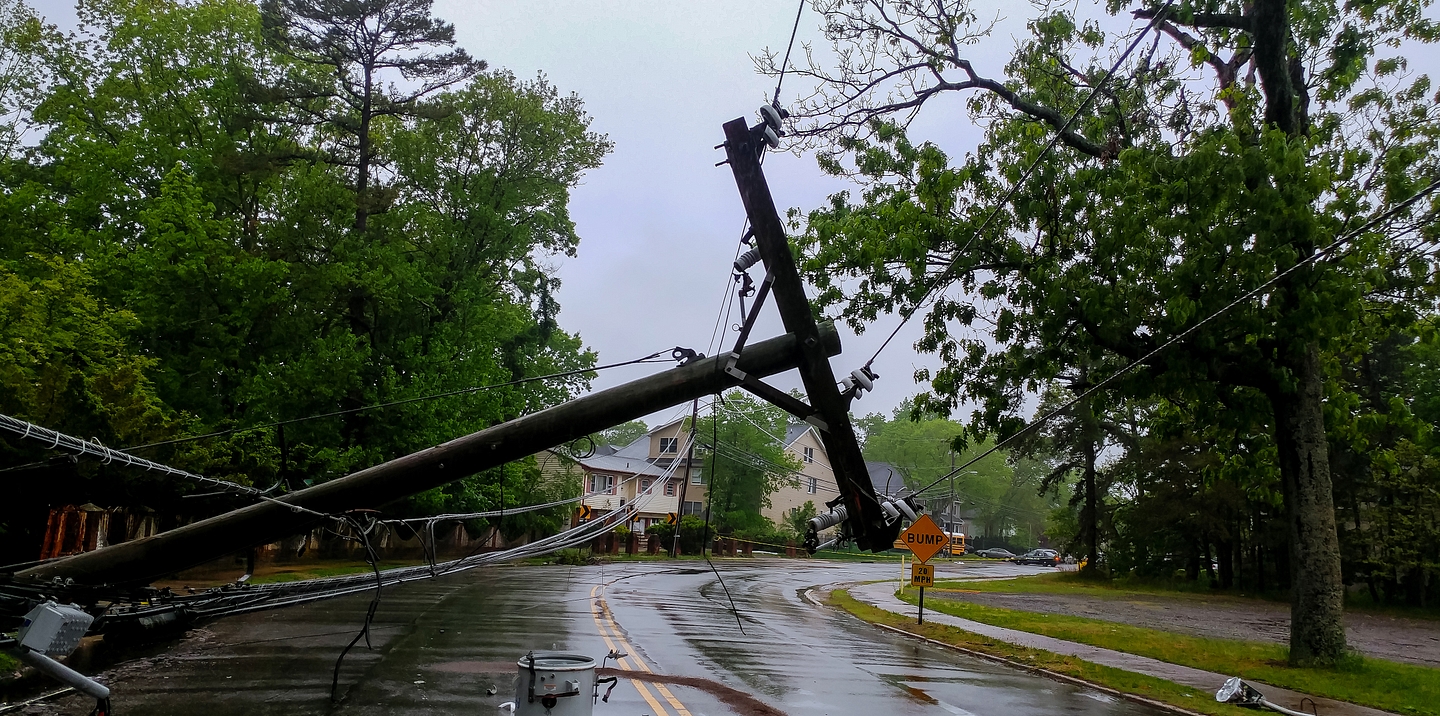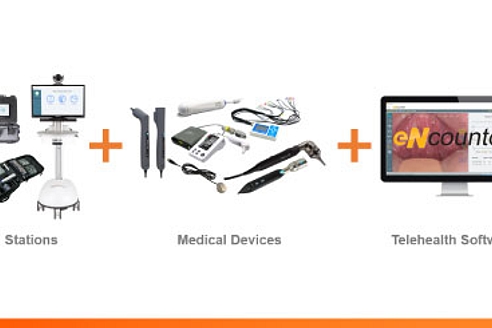
Beyond the Storm: The Power of Digital Health in Disaster Zones

Digital health solves many clinical challenges but one of its most valuable applications is its most urgent – mitigating a disaster’s health impacts. Floods, fires, blizzards, cyberattacks, earthquakes, mass shootings, and collapsing infrastructure almost always mean injuries and other medical events. But these clinical emergencies occur right when communication lines may be cut, healthcare resources unreachable.
During these crises, digital health can connect patients to remote providers while alleviating the burden on overwhelmed facilities. By securing data for integration into an EHR, the right technologies can ensure continuity of care. In this report, we look at the applications, their benefits, and the best practices that can maximize the power of digital health.
When Disaster Means Clinical Disintegration
Chaos: it’s the shifting, tumultuous core of every disaster. From tsunamis to terrorist attacks to viral outbreaks, the loss of control can cascade into every aspect of healthcare.
Consider the healthcare impacts of a wildfire. Police set up physical barricades, closing roads and rendering entire communities inaccessible. Unable to return home, some evacuees flood the nearest hospitals in need of medication, oxygen tanks, or insulin pumps. The smoke affects residents with respiratory conditions, who also fill the hospital long after the wildfire is controlled. Some residents experience Post-Traumatic Stress Disorder (PTSD.)
When a disaster paralyzes traditional healthcare channels, one avenue of care delivery remains open: digital health. These modalities do more than connect survivors to providers – it improves the efficiency of emergency response and supports communities on the long road to recovery.
Displaced and Disconnected: Challenges in Disaster Zones
Every year brings its share of disasters, natural and manmade. These events may bring tornadoes, floods, or bullets, but each disruption is characterized by an immediacy that escalates the need for medical attention just as local healthcare resources collapse.
Common challenges include:
- Critical communication problems. First responders, providers, officials, and residents must exchange critical updates but that’s not always possible at a disaster site. Cell towers, fiber optic cables, and power grids might be physically damaged, while a high volume of calls, texts, and data usage can burden networks. Power outages can affect landlines, cell phones, and internet routers.
- Infectious disease risk. Displaced populations, damaged sanitation systems, and compromised infrastructure can create fertile ground for infectious disease outbreaks, particularly in overcrowded shelters.
- Power outages. Patients can lose access to vital supplies, including refrigerated medications, ventilators, or dialysis machines. Some may suffer hypothermia or heat stroke, while blackouts and deactivated security systems can increase the risk of accidents, injuries, and crime.
Hurricane Maria
Hurricane Maria made landfall in Puerto Rico on September 20, 2017 as a category 4 hurricane. It devastated island infrastructure, dropped up to 37.9 inches of total rainfall, and caused 6-9 feet of flooding and mud slides. It also caused the longest blackout in US history with almost 11 months passing before the island fully restored power.
Puerto Rico's healthcare infrastructure was already precarious. Almost half of the population was covered by Medicaid and many lived with at least one chronic disease. The storm damage and loss of critical infrastructure like power and communication systems also leads to:
- Lack of medicine for chronic diseases such as diabetes and respiratory disease
- The interruption of life-sustaining treatments such as dialysis or chemotherapy
- A rise in infectious diseases like leptospirosis from contaminated water
- A significant increase in mental health problems such as depression, anxiety, and PTSD
More than 3,000 deaths are attributed to Hurricane Maria.
Remote and flexible, digital health can adapt to even austere environments. Providers can treat patients in hazardous areas without physical deployment, creating more room for rescue efforts and humanitarian aid.
By connecting displaced and vulnerable patients to medical resources, digital health supports survivors throughout the entire lifecycle of a disaster: before, during and after.
Disaster Preparedness
The most effective digital health program is deployed before a crisis. Teams can heat-map their vulnerable populations and identify critical healthcare infrastructure, developing evacuation plans and emergency protocols. Also helpful: preparing alert systems to disseminate real-time information about disaster updates, evacuation routes, and public health warnings.
Disaster Response
Even as a disaster is unfolding, providers can conduct remote consultations or triage patients who are trapped or facing long wait times at frantic hospitals. They can also relocate in advance or be reallocated to provide on-call digital health support. Integrated digital platforms can track patients as they move between temporary care sites, ensuring no one gets lost in the system. They can also send and receive real-time updates on conditions, resources, and active threats in the field.
Disaster Recovery
Brick-and-mortar healthcare facilities are often engulfed by patient needs in the aftermath of a disaster. Some facilities may vanish altogether in the destructive impact of a disaster, forcing patient and provider relocation. That’s where digital health can help rebuild a community's health infrastructure, from enabling pop-up tents and portable clinics to supporting primary, emergency, and behavioral care from the point of disaster. Teams that harvest the right data can plan informed disaster response strategies and strengthen their healthcare systems.
Disasters on the Rise
According to the International Disaster Database of the Centre for Research on the Epidemiology of Disasters, disaster events have increased from 100 per year in the 1970s to around 400 events per year worldwide in the past 20 years.
From Chaos to Connection: Digital Health in a Deadly Flood
The flood begins without warning just after midnight, relentlessly rising in a rural Midwestern town along the Mississippi River Basin. Within hours, houses are ripped from their foundations, cars submerged. The local clinic is inundated, its supplies washed away or contaminated. Cell towers are down in many areas, and power lines are sparking in the water. People can’t get to doctors, and local responder teams are overwhelmed.
But someone has prepared for this: Dr. Ramirez, Chief of Staff at a hospital about ninety miles from the flood. His hospital administration recently built a digital health program to serve rural parts of the state. When he hears of the flood, his team establishes a makeshift emergency response center – and they begin to communicate and coordinate with other agencies and teams.
Soon Dr. Ramirez is speaking to a medic onboard a National Guard helicopter in the flood zone. The medic uses a satellite-linked tablet to transmit images and vital signs of a woman whose leg was crushed when her house collapsed. Dr. Ramirez provides instructions on stabilizing the fracture. On another screen, a nurse practitioner guides someone through cleaning and bandaging a child’s severe laceration to prevent sepsis.
The only local hospital has run out of beds, so they set up a tent in the parking lot to treat patients. Through remote triage, physicians assess the severity of injuries to decide who needs immediate extraction, creating a virtual surge capacity. An elderly diabetic man, found shivering on a rooftop, is diagnosed with early-stage hypothermia and low blood sugar; a remote endocrinologist guides first responders in administering glucose packets.
In the days following the flood, survivors are housed in temporary shelters. As families begin to accept their loved ones may never be found, the psychological toll began to emerge. Remote therapists offer counseling and support for those grappling with loss and trauma. Public health officials track the real-time inventory of antibiotics, sanitation kits, and IV fluids, so they can prevent shortages and target their medical response. Monitoring for signs of waterborne illnesses and infections in the shelters, they identify an outbreak of gastroenteritis in a shelter and dispatch mobile units to treat evacuees.
But that’s not the only outbreak. The flood leads to E.coli infections among search and rescue crews, who wade through water contaminated with sewage. Crews on the ground connect to infectious disease specialists in unaffected areas, who prescribe antibiotics and communicate with public health agencies, who use digital dashboards to track the outbreak in real time. By accessing Electronic Health Records (EHRs), the providers can see each infected crew member's health history, allergies, and existing conditions, helping them make safer treatment decisions.
The flood waters recede; the community begins to rebuild. But in the weeks and months of recovery, high patient volumes continue to besiege the local hospital. Patients fill the behavioral health unit, reporting depression and PTSD, while other patients have respiratory issues from water-damaged buildings with mold issues. Dr. Ramirez’s team connects them to psychiatrists, counselors, pulmonologists, and other specialists – and remains available to support the community on the long road to restoration ahead.
Caring for Communities in Crisis: 7 Digital Health Benefits in Disaster Zones
Even in the confusion and chaos of a disaster, digital health puts control back in the hands of patients and providers.
- Digital health enables Golden Hour triage and treatment. The "golden hour" concept in trauma medicine emphasizes rapid intervention for optimal patient outcomes. With digital health, there’s no waiting for the medical cavalry to ride in; specialist care is immediately available in the disaster zone. Patients benefit from quicker triage and informed treatment decisions – directly impacting morbidity and mortality rates.
- First responders and healthcare facilities can communicate and coordinate more efficiently. When health authorities, first responders, and the public can communicate, patients find out about evacuation transport. Physicians hear about emerging health threats. Response teams can avoid hazardous conditions. Without this coordination, these teams play fragmented and often conflicting roles; but with it, they can move cohesively and act from a shared operational picture.
- Patients benefit from continuity of care. Patients with chronic conditions can deteriorate quickly when severed from treatment. Remote Patient Monitoring (RPM) helps displaced individuals receive care for hypertension, diabetes, Chronic Obstructive Pulmonary Disease, heart conditions, and other issues.
Digital Health Saves Lives After Earthquake and Floods
A study on Mortality and Emergency Department (ED) Wait Times in Simulated Disasters found that digital health could decease mortality by up to 36% in earthquake events — and decrease ED wait times by 40-94%. Here's how that worked for 2 earthquakes in Japan and Nepal.
After a 7.6 magnitude earthquake struck Nepal in 205, 90% of local healthcare systems were debilitated. Doctors for You used digital health platforms o coordinate delivery of medical resources, share patient health updates, and support survivors' mental health in disconnected areas, despite power outages and infrastructure collapse. They coordinated emergency response for over 22,000 injured people.
Three years later, the Hokkaido Earthquake struck Japan, followed by heavy rains. Providers used the J-SPEED digital health data platform to conduct thousands of consultations and deploy digital hdata for triage, resource mapping, and patient tracking. Over 97% of consultations during Hokkaido's response happened within 13 days.
- Digital health lightens the burden on overtaxed facilities. Most hospitals and clinics run on tight staffing ratios on a good day. When disaster survivors crowd facilities, remote providers can divert patient volumes, freeing up resources for critical cases.
- Mass casualty event teams can identify human remains. Digital health tools allow forensic teams to securely access medical records or dental charts from a missing person and compare them with remains or post-mortem data – improving identification accuracy.
- Infectious disease outbreaks are contained. Damaged sanitation resources and compromised infrastructure can elevate the risk of contagion in crowded environments. In one cholera outbreak in India, public health officials used digital health to detect and isolate the strain, reduce the severity of diarrheal cases, and avoid an epidemic disaster.
- Survivors connect to behavioral health support. The psychological toll of disasters can be immense. The loss of loved ones and homes, the stress of displacement, and the witnessing of unimaginable horror can lead to depression, anxiety, PTSD, and beyond. Yet mental health services are often deprioritized in disaster response. Digital health can connect communities in recovery to consistent, quality mental health resources.
When Hospital Violence is the Disaster
Hospital active shooter incidents are on the rise. More than 146 shootings occurred between 2000 and 2019, which the American Journal of Managed Care called a "rising epidemic." Stabbings and hostage situations are also increasing. These incidents can throw hospitals into lockdown — bringing medical care to a halt unless providers and patients can connect through digital health channels.
Best Practices for Digital Deployments
“Intellectuals solve problems; geniuses prevent them." – Albert Einstein
Digital health's effectiveness in disaster response is directly proportional to its level of pre-disaster planning and integration. As an improvisation in chaos, its benefits are crippled. But as a strategic program that is planned, deployed, and tested before a disaster happens, your digital health program can limit the most pernicious healthcare impacts when a crisis hits.
Develop heat maps to identify areas in need.
Hospitals, community teams, and public health agencies should work together to build the digital health strategy. Disaster risk, regional health disparities, patient volumes, infrastructure strengths and weaknesses, and provider shortages should all be assessed when solving a potential future crisis.
Build a disaster-ready technological infrastructure.
Digital health is more than video calls. You’ll want to consider proprietary hardware, data logistics, and bandwidth requirements across satellite, data, Wi-Fi, and even radio. Disasters may reduce connectivity, so plan for low-bandwidth solutions and Local Access Networks. Pre-purchase satellite access and portable antennas to provide the ability to enable comms through the disaster and after. Remember that your systems will need to handle a surge in users and patient data while adapting to different levels of infrastructure availability.
Work with experienced digital health partners who can bring robust and interoperable digital tools to the table – that includes data security and interoperability with your systems. Finally, be sure they will support you not only through implementation and training but through the lifetime success of your program.
Plan for communication redundancy.
A disaster may take down your usual communication channels like the Internet or cell networks. Plan for backup systems, such as two-way radio, satellite phones, or emergency broadcasting systems.
Develop standardized protocols.
Every digital health program is a multi-stakeholder project. Standardized protocols are critical for effective coordination across clinical, administrative, technical, and community stakeholders. A disaster may involve agencies you haven’t worked with before, such as state and federal organizations or international bodies – so develop protocols for clear collaboration.
Train the entire team.
At the outset of planning, outline roles and responsibilities and document common use cases. Training should cover both technology use and best practices for virtual patient interactions, and telepresenting and telementoring techniques. In a disaster, a designated program lead may not be available, so train backups for every role. That includes volunteers, IT teams, medical assistants, community partners, and anyone else who may need to assist in a crisis.
Build a digital-friendly culture in your workplace and partnerships.
Provider resistance is a common factor in digital health adoption. They may underestimate its effectiveness, feel too busy for training sessions, or be ambivalent toward technology. Staff turnover also means perpetual retraining. All of this can be a significant bottleneck.
To make digital health more appealing, involve providers early in the planning and implementation phases, and emphasize the benefits to themselves as well as patients. Protocols should consider all staff workflows – by addressing how physicians, nurses, and administrators handle their tasks, the program is more likely to gain support. Be sure to employ solutions with an intuitive interface; providers will adopt technology when it is easy to understand and use.
According to the World Health organization, an investment of just US $0.24 per patient per year in digital health interventions can help prevent millions of deaths and maintain healthcare coverage during major disasters.
Practice dry runs.
No matter how thorough your training program, time will gradually erode your team’s memory when years pass without a disaster. Run simulations of your response plan every so often. You’ll identify weaknesses, create smarter practices, and keep staff competencies sharp. Have someone inject alternative challenges throughout each training session; no amount of planning can overcome first contact with a disaster. However, exposure to unexpected training challenges can spark agile thinking and creative solutioning that will keep a team as ready as they can be.
While you can’t ask the public to participate, you can develop public-facing resources on using digital health tools and where to get support during an emergency.
Secure funding for a long-term, sustainable program.
Your digital health program should be budgeted as critical infrastructure – not a discretionary IT expense. After the initial deployment, your program will require ongoing technical support and consistent staffing or your team will be caught short in the next disaster. Integrate your program into your core operational budget and strategic planning rather than seeking occasional funding surges.
GlobalMed: The Digital Pulse of Disaster Recovery
With over 23 years of experience in building and deploying digital health solutions, GlobalMed has brought care to survivors of floods, cyclones, fires, and other disasters across the world. Our fully integrated platform combines software, hardware, and data-capturing devices to bring clinically powerful healthcare to any emergency.
We connect disaster zones to rapid, quality care.
Simple and intuitive, GlobalMed solutions are easy to use for both patients and providers, so they can quickly connect without a long learning curve. Our Transportable Exam Stations can swiftly connect patients to care even in disaster-torn landscapes. Patient-directed triage and an AI-driven symptom checker expedite assessments and prioritization, while mobile providers using portable digital health tools can count on remote specialist support.
Our tools provide evidence-based care across the continuum of care.
Disaster survivors represent the full range of care needs – from low-acuity to high-acuity, specialty, and complex care scenarios. With more than 55 modalities of medicine to address specific conditions, our exam cameras, digital stethoscopes, ultrasound probes, ECG, spirometry equipment, and clinical stations work together to address every need. Our eNcounter® software and our devices are purpose-built for evidence-based medicine; from ultrasounds to ECGs to stethoscopes, our platform collects and shares the data needed for diagnostic accuracy at the point of care.
Our interoperable solutions work seamlessly with hospitals and agencies.
Our ability to seamlessly integrate into EHR systems, public health networks, and other healthcare IT systems ensures accurate data for smarter clinical decision making and coordination. A sophisticated API ensures that every patient encounter is securely documented in the appropriate health record system.
Supporting Survivors of Cyclone Idai
When Tropical Cyclone Idai struck Zimbabwe, its catastrophic impact left more than 1,200 people dead, with thousands wounded and missing. Mobile clinics using GlobalMed digital health solutions helped patients see physicians mediately via remote consultations. From refilling patients' much-needed medications to freeing up critical resources for life-threatening cases, these mobile clinics took immense pressure off the corded hospital emergency rooms and prevented contagions and secondary health crises.
GlobalMed solutions integrate easily into mobile clinics and units.
Adaptive and scalable, our modular platform fits easily into any health setting. Because we customize solutions to each program, teams can tailor their digital health system to their disaster response strategy – whether that configuration needs to fit into a mobile unit, hospital, or other environment.
We supply our own connectivity.
Even during power and Internet outages, GlobalMed ensures quality uptime and communication through its broadband connectivity. A recent Romanian rescue training exercise successfully used our platform more than 100 feet underground to capture patient vitals enabling a remote provider to tailor care. Our solutions function even in austere and isolated environments, connecting patients to top-tier medical care when they need it most.
Our federal-grade security keeps patient data safe.
Disasters can be security nightmares, in part because patient data is exchanged between multiple agencies and systems. SOC 2 and HIPAA compliant, GlobalMed delivers encrypted data transmission, secure connections, technical safeguards, stringent audit controls, and protocols for breach notifications. With the Authority to Operate (ATO) on U.S. Department of Defense networks, GlobalMed provides the highest level of security in the industry.
Our white-glove support keeps teams prepared for any crisis.
We support every step of your digital health journey, from a smooth rollout to training on both technology and clinical integration. Our experienced staff are available 24/7 to troubleshoot any problems and help you maximize the benefits of your program. The result: your team stays competent and prepared for any emergency.
A Lifeline for Lasting Recovery
Disaster can befall any community. No area is immune to a manmade or natural crisis, be it a collapsing bridge, a hurricane, a plane crash, or other event. When that disaster freezes traditional care channels, when patients can’t call an ambulance for help, digital health extends a life-saving bridge that can protect not only patient lives but the well-being of communities for decades to come.
To prepare for tomorrow’s disaster, build your digital health program today.
Connect with us to learn how our digital health solutions can connect your community to exceptional medical care.
For additional details on digital health solutions, visit https://bit.ly/3KAwZuS
About GlobalMed
The global leader in digital health, GlobalMed enables digital care across the world, bringing evidence-based healthcare to underserved communities, disaster sites, military installations, and other remote areas. All-in-one software and hardware solutions empower providers to treat patients at any point on the continuum of care – lowering costs and improving patient outcomes from one platform. With over 60 million consults delivered in 60 countries, its platform provides the highest level of security in the industry. Founded in 2002 by its CEO, a Marine Corps Reserve Veteran, GlobalMed is proud to partner with Defense Health Agency, Veterans Health Administration, and international agencies in the service of transforming healthcare.


